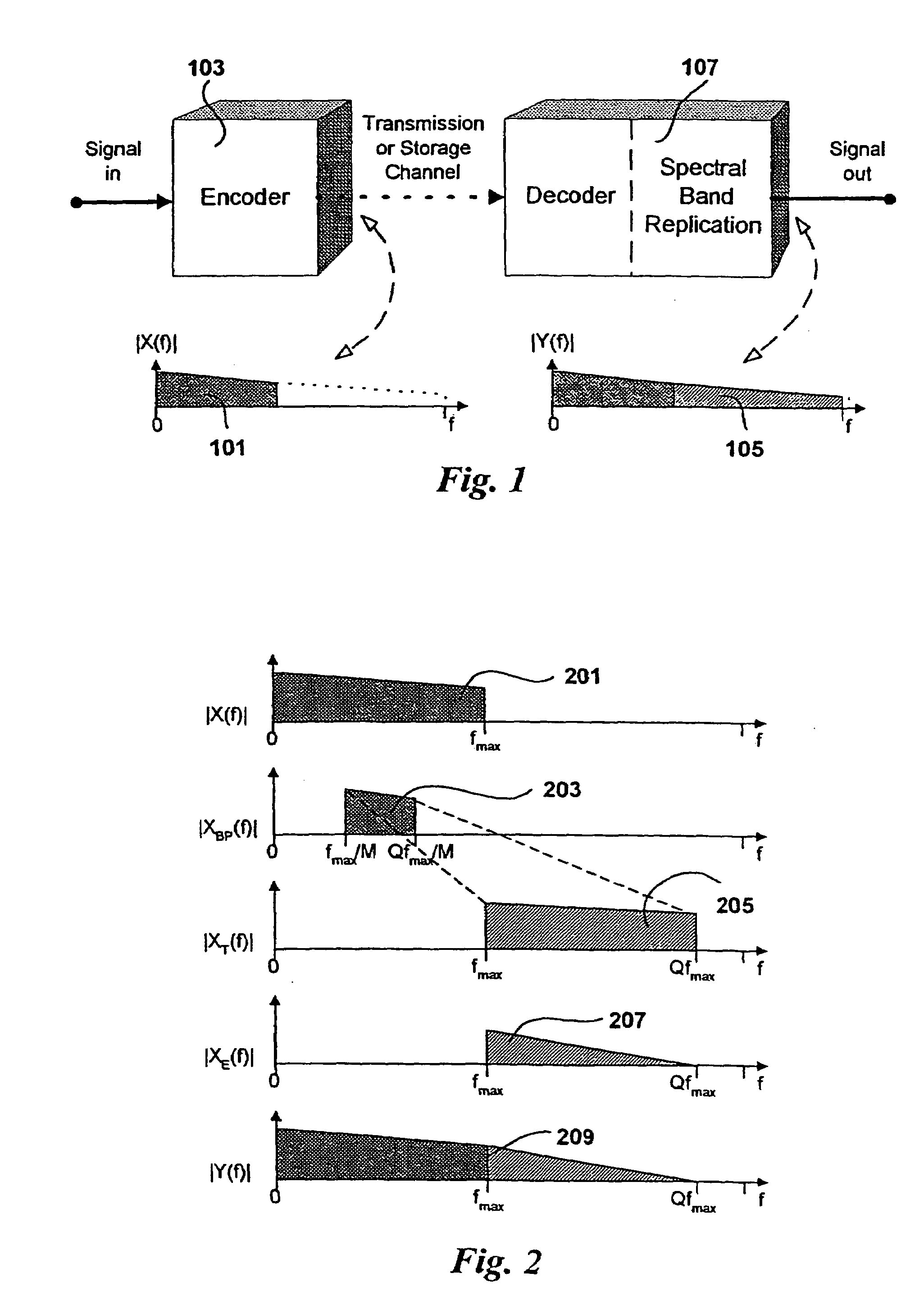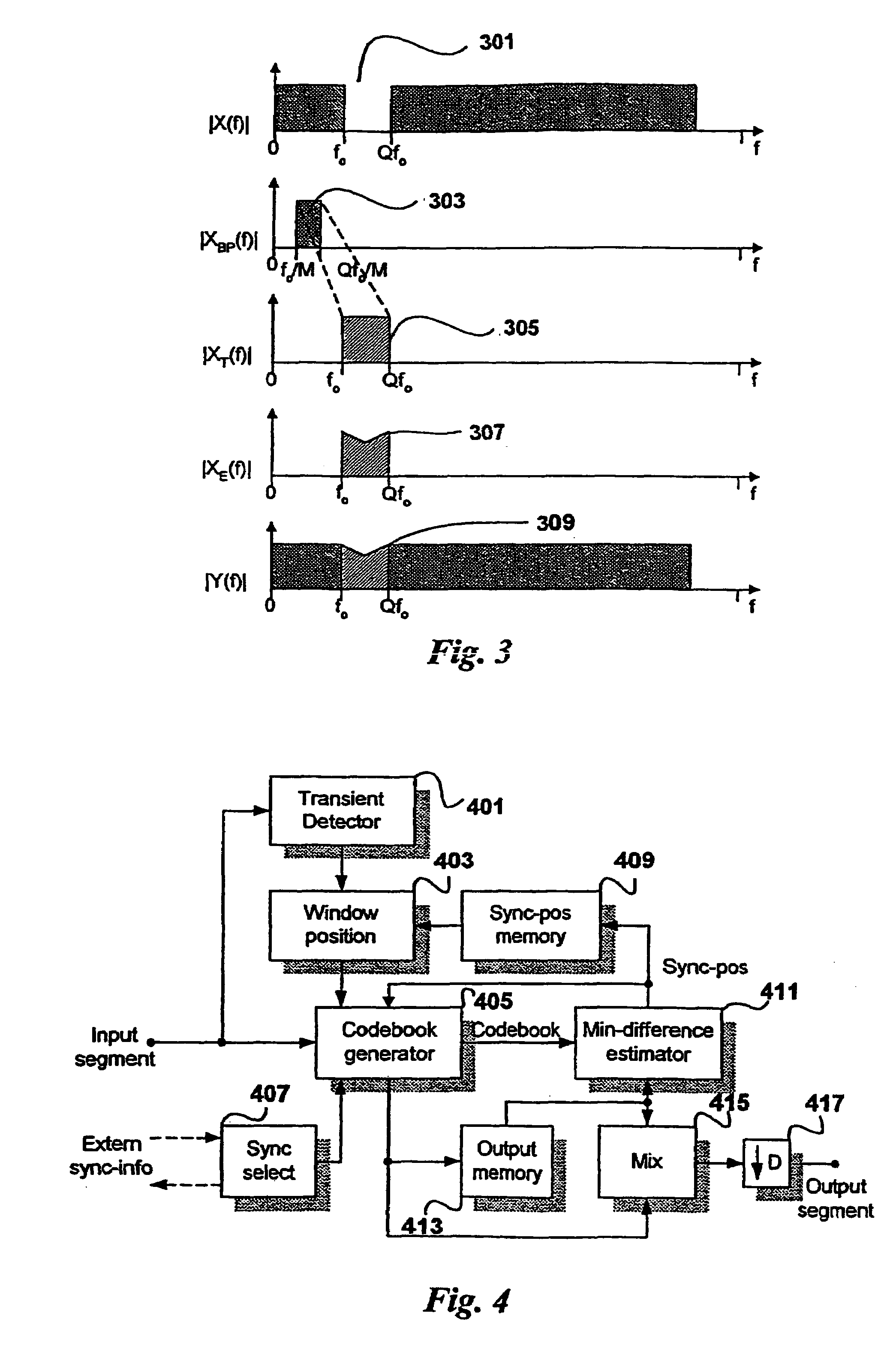Source coding enhancement using spectral-band replication
a source coding and spectral-band replication technology, applied in the field of source coding system improvement, can solve the problems of annoying perceptual degradation, inefficient bitrate versus perceptual entropy of high-fidelity linear pcm signal, and thus important wideband speech coding, so as to achieve the effect of improving perceptual quality and higher perceptual quality
- Summary
- Abstract
- Description
- Claims
- Application Information
AI Technical Summary
Benefits of technology
Problems solved by technology
Method used
Image
Examples
Embodiment Construction
[0075]Throughout the explanation of the embodiments herein, emphasis is given to natural audio source coding applications. However, it should be understood that the present invention is applicable on a range of source coding applications other than that of encoding and decoding audio signals.
Transposition Basics
[0076]Transposition as defined according to the present invention, is the ideal method for spectral replication, and has several major advantages over prior art, such as: no pitch detection is required, equally high performance for single-pitched and polyphonic programme material is obtained, and the transposition works equally well for tonal and non-tonal signals. Contrary to other methods, the transposition according to the invention can be used in arbitrary audio source coding systems for arbitrary signal types.
[0077]An exact transposition a factor M of a discrete time signal x(n) in the form of a sum of cosines with time varying amplitudes, is defined by the relation
[0078...
PUM
 Login to View More
Login to View More Abstract
Description
Claims
Application Information
 Login to View More
Login to View More - R&D
- Intellectual Property
- Life Sciences
- Materials
- Tech Scout
- Unparalleled Data Quality
- Higher Quality Content
- 60% Fewer Hallucinations
Browse by: Latest US Patents, China's latest patents, Technical Efficacy Thesaurus, Application Domain, Technology Topic, Popular Technical Reports.
© 2025 PatSnap. All rights reserved.Legal|Privacy policy|Modern Slavery Act Transparency Statement|Sitemap|About US| Contact US: help@patsnap.com



